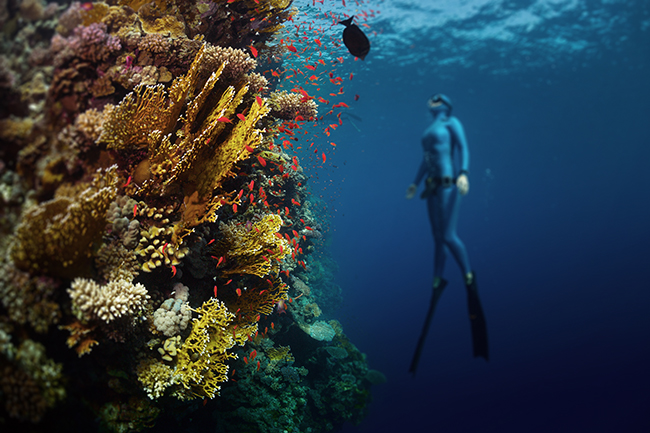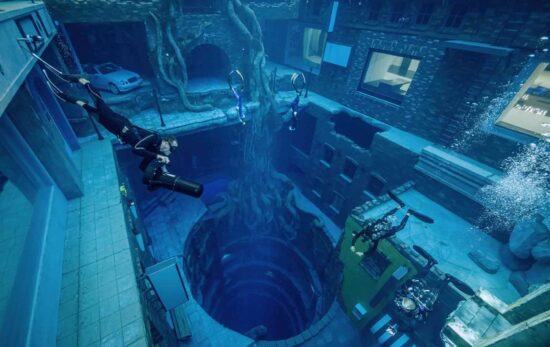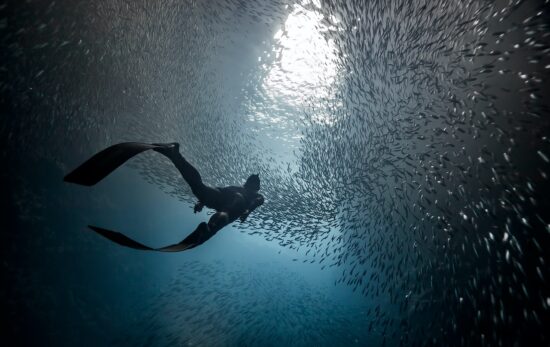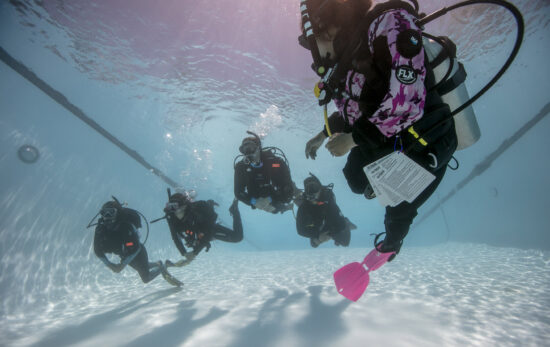Are you planning to take the PADI Freediver course? As with any course, you’ll want to do the best that you are capable of, and to ensure that happens it’s important to get prepared!
Freediving is a leisure activity but it’s also a sport, and like all sports, it helps to have an understanding of what is required of you and to be physically and mentally fit. Here are some great tips for preparing for your freediving course in advance.

Step 1. Start Studying
PADI Freediver courses have eLearning available which means that you can start to study the theory component of your course online from home. You can work at your own pace and take your time, without rushing, to really understand the material. The eLearning portion of the course also contains information relating to relaxation, visualization and breathing exercises, which you can start to practice at home too (more on this below).
Step 2. Practice Relaxation Exercises
This is a core component of all freediving courses: learning to relax and more importantly, remain relaxed as the urge to breathe increases. Deep, slow, calm breaths help lower your heart rate so your body will conserve oxygen. Every tense muscle uses more oxygen and energy than a relaxed muscle. There are some great relaxation exercises recommended in your PADI Freediver manual (or eLearning) that you can try at home.

Step 3. Practice Breathing Exercises
Normal breathing frequency is anywhere from 12 to almost 20 breaths per minute. Before your freediving course you can prepare by practicing diaphragmatic breathing only (and not chest breathing) to somewhere from 4.5 to 7 breaths per minute. This sounds complicated but there are now apps available on smart phones which help with timing and breath control. “Breathe 2 Relax” and “My CalmBeat” are both free to download!
Step 4. Practice Visualization Techniques
Visualization is a process that helps you to stay relaxed underwater which also helps to prevent your breathing rate from increasing. Visualization is really a matter of “finding your happy place” by visualizing somewhere that makes you happy and brings about a feeling of calm. By practicing this technique you’ll be able to find your happy place faster each time you need it.
Step 5. Work on Your Physical Fitness & In-Water Comfort
Your PADI Freediver Instructor will have you demonstrate basic water skills to be sure you’re comfortable in the water. This is a 200-metre (656 feet) swim or 300-metre (984 feet) swim using a mask, fins and snorkel without stopping. There is no time limit for this, and you may use any swimming strokes you want. To prepare for your freediving course it’s a great idea to start swimming to improve your fitness and your comfort level in the water. If you already have a mask, snorkel and fins then use them!

Step 6. Contact Your PADI Freediver Center
If you don’t have any freediving equipment yet, you may want to invest in your own prior to your course. Contact your local PADI Freediver Center to book your course and discuss equipment needs and requirements.
Step 7. Get a Good Night’s Sleep Prior to Your Course
This might sound obvious but it’s super important. You are participating in a strenuous activity – get adequate sleep to perform at your best. You might be able to function on little sleep normally but it will certainly affect your diving performance!
Ready to dive in? Learn more about the PADI Freediver course and get started today from home with PADI eLearning.





